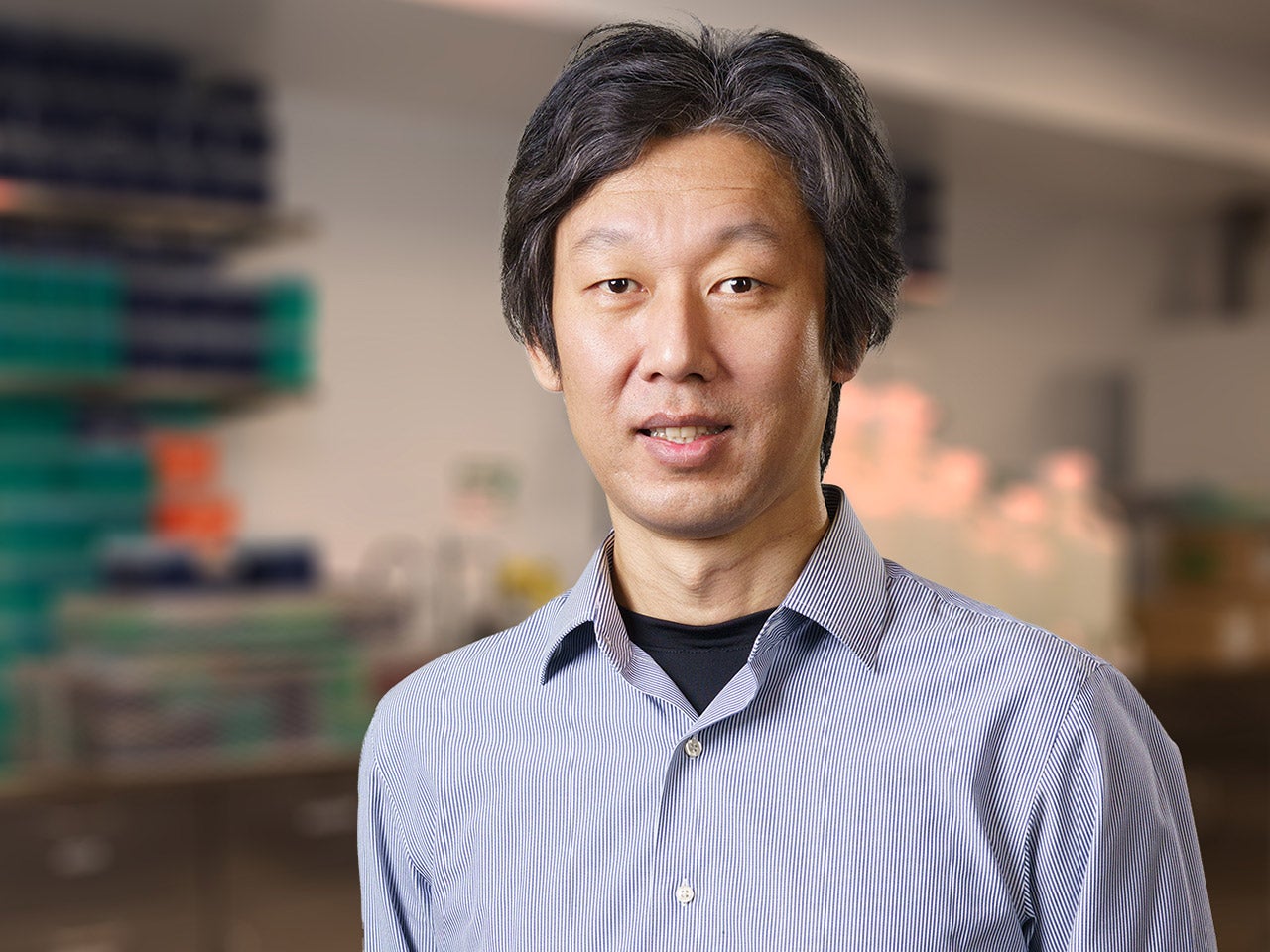As information zings from cell to cell inside the brain, bursts of electricity spur its transmission. At Cold Spring Harbor Laboratory (CSHL), scientists have turned their attention to the tiny pores that let charged ions enter a cell—and the molecular gatekeepers that help control them.
CSHL structural biologist Hiro Furukawa studies NMDA receptors (NMDARs). These ion channels open in response to chemical signals from neurons or drugs. The channels must be carefully regulated. When they open too wide or stay shut for too long, it can interfere with learning and memory. This can lead to neurodegenerative conditions like Alzheimer’s disease.
Now, Professor Furukawa and postdoc Hyunook Kang have captured detailed images of an NMDAR held wide open by one of the brain’s natural gatekeepers, a neurosteroid called 24S-HC. They’ve also seen how a synthetic regulator latches onto the NMDAR to prevent it from fully opening.
Their images, produced with a powerful method called cryo-electron microscopy, show four rod-like parts of the NMDAR bend out of the way to fully open the channel. They also reveal how the regulator locks two of those rods in position, keeping the channel from opening all the way.
The bending “rods” seen here are M3 helices. When mutated, these helices can be associated with neurological disorders.
Understanding how natural and synthetic regulators interact with NMDARs will inform the design of safe and effective therapies to treat disease. Imagine a chemical doorstop for the brain’s electrical gates.
Furukawa’s group teamed up with researchers at Emory University to measure how much electricity flows through an NMDAR in its different states. Unsurprisingly, a fully open channel lets more ions through than a partially open one. In the brain, greater ion flow increases neural signaling. Additionally, while a wide-open channel lets both sodium and calcium into a neuron, a partially open channel is more selective. Sodium gets through easily. However, it’s harder for calcium to pass. That has important implications for therapy, Furukawa explains:
“You need calcium for learning and memory, but when there’s too much, it degenerates neurons. You also need sodium to generate electrical signals. If you can control how much calcium goes in without affecting sodium going in, you’ll maintain close to normal electrical activity. This could be an effective strategy for neurodegeneration as well as strokes.”
The researchers point out that our brains contain many kinds of NMDARs and neurosteroids. It’s up to neuroscientists like Furukawa and Kang to figure out how those crucial molecules interact. The solutions may provide important tools for fine-tuning signaling in the brain, opening the door for new and improved therapies as well as better mental health outcomes.
Written by: Jennifer Michalowski, Science Writer | publicaffairs@cshl.edu | 516-367-8455
Funding
National Institutes of Health, Austin’s Purpose, Robertson Research Fund, Doug Fox Alzheimer’s Fund, Heartfelt Wings Foundation, Gertrude and Louis Feil Family Trust
Citation
Kang, H., et al., “Mechanism of conductance control and neurosteroid binding in NMDA receptors”, Nature, October 29, 2025. DOI: 10.1038/s41586-025-09695-4
Core Facilites
Principal Investigator

Hiro Furukawa
Professor
Cancer Center Member
Ph.D., The University of Tokyo, 2001

